Mercedes EQE vs Peugeot 3008 – Performance, range & efficiency compared
Two cars, one duel: Mercedes EQE meets Peugeot 3008.
Which one wins in performance, efficiency and value for money? Find out now!
Costs and Efficiency:
Looking at overall running costs, both models reveal some interesting differences in everyday economy.
Peugeot 3008 has a convincingly advantage in terms of price – it starts at 35100 £, while the Mercedes EQE costs 57600 £. That’s a price difference of around 22446 £.
In terms of energy consumption, the advantage goes to the Mercedes EQE: with 15.80 kWh per 100 km, it’s slight more efficient than the Peugeot 3008 with 16.90 kWh. That’s a difference of about 1.10 kWh.
As for range, the Peugeot 3008 performs hardly perceptible better – achieving up to 698 km, about 7 km more than the Mercedes EQE.
Engine and Performance:
Power, torque and acceleration say a lot about how a car feels on the road. This is where you see which model delivers more driving dynamics.
When it comes to engine power, the Mercedes EQE has a convincingly edge – offering 625 HP compared to 325 HP. That’s roughly 300 HP more horsepower.
In acceleration from 0 to 100 km/h, the Mercedes EQE is convincingly quicker – completing the sprint in 3.50 s, while the Peugeot 3008 takes 6 s. That’s about 2.50 s faster.
There’s no difference in top speed – both reach 220 km/h.
There’s also a difference in torque: Mercedes EQE pulls decisively stronger with 950 Nm compared to 511 Nm. That’s about 439 Nm difference.
Space and Everyday Use:
Beyond pure performance, interior space and usability matter most in daily life. This is where you see which car is more practical and versatile.
Both vehicles offer seating for 5 people.
In curb weight, Peugeot 3008 is clearly lighter – 1648 kg compared to 2375 kg. The difference is around 727 kg.
In terms of boot space, the Peugeot 3008 offers to a small extent more room – 520 L compared to 430 L. That’s a difference of about 90 L.
When it comes to payload, Mercedes EQE clearly perceptible takes the win – 600 kg compared to 467 kg. That’s a difference of about 133 kg.
Who comes out on top?
Overall, the Mercedes EQE shows itself to be wins the duel decisively and secures the title of DriveDuel Champion.
It convinces with the more balanced overall package and proves to be the more versatile choice for everyday use.
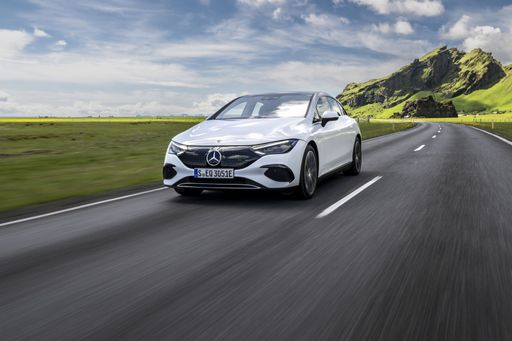
Mercedes EQE
Mercedes EQE
The Mercedes-Benz EQE epitomises the brand's commitment to luxury and electric mobility, offering a seamless blend of cutting-edge technology and elegant design. Inside, occupants are treated to a sophisticated cabin that combines high-quality materials with state-of-the-art infotainment features, ensuring a refined driving experience. On the road, the EQE impresses with its smooth, quiet ride and impressive agility, making it a standout choice for those seeking both comfort and sustainability.
details @ group-media.mercedes-benz.com
@ group-media.mercedes-benz.com
 @ group-media.mercedes-benz.com
@ group-media.mercedes-benz.com
 @ group-media.mercedes-benz.com
@ group-media.mercedes-benz.com
 @ group-media.mercedes-benz.com
@ group-media.mercedes-benz.com
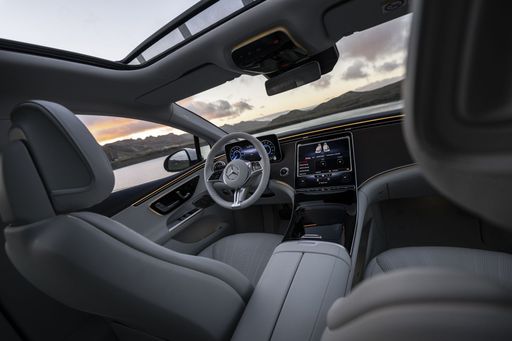 @ group-media.mercedes-benz.com
@ group-media.mercedes-benz.com
Peugeot 3008
The Peugeot 3008 is a compact SUV that seamlessly combines sleek design with modern functionality. Its interior offers a sophisticated and comfortable driving experience, characterised by high-quality materials and innovative technology features. With its dynamic performance and stylish aesthetics, the 3008 stands out in the competitive world of family SUVs.
details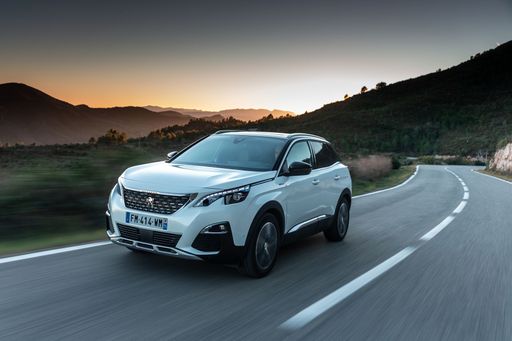 @ media.stellantis.com
@ media.stellantis.com
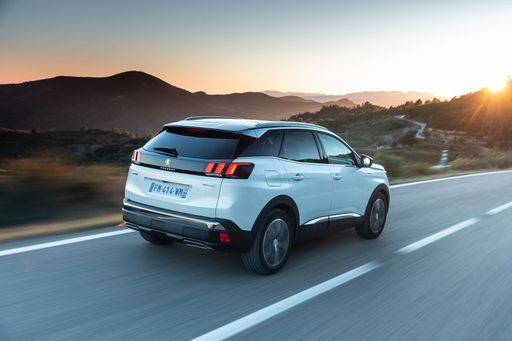 @ media.stellantis.com
@ media.stellantis.com
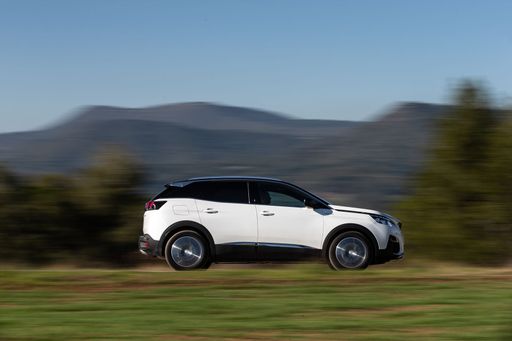 @ media.stellantis.com
@ media.stellantis.com
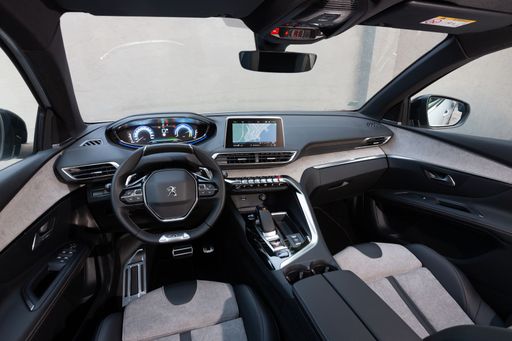 @ media.stellantis.com
@ media.stellantis.com

|

|
|
|
|
Costs and Consumption |
|
|---|---|
|
Price
57600 - 94900 £
|
Price
35100 - 51400 £
|
|
Consumption L/100km
-
|
Consumption L/100km
0.9 - 5.4 L
|
|
Consumption kWh/100km
15.8 - 20.7 kWh
|
Consumption kWh/100km
16.9 - 17.8 kWh
|
|
Electric Range
502 - 691 km
|
Electric Range
85 - 698 km
|
|
Battery Capacity
90.5 - 96 kWh
|
Battery Capacity
0.4 - 96.9 kWh
|
|
co2
0 g/km
|
co2
0 - 121 g/km
|
|
Fuel tank capacity
-
|
Fuel tank capacity
55 L
|
Dimensions and Body |
|
|---|---|
|
Body Type
Sedan
|
Body Type
SUV
|
|
Seats
5
|
Seats
5
|
|
Doors
4
|
Doors
5
|
|
Curb weight
2375 - 2540 kg
|
Curb weight
1648 - 2337 kg
|
|
Trunk capacity
430 L
|
Trunk capacity
470 - 520 L
|
|
Length
4946 - 4964 mm
|
Length
4542 mm
|
|
Width
1961 mm
|
Width
1895 mm
|
|
Height
1492 - 1510 mm
|
Height
1641 mm
|
|
Max trunk capacity
-
|
Max trunk capacity
1430 - 1480 L
|
|
Payload
545 - 600 kg
|
Payload
383 - 467 kg
|
Engine and Performance |
|
|---|---|
|
Engine Type
Electric
|
Engine Type
Plugin Hybrid, Electric, Petrol MHEV
|
|
Transmission
Automatic
|
Transmission
Automatic
|
|
Transmission Detail
Reduction Gearbox
|
Transmission Detail
Dual-Clutch Automatic, Reduction Gearbox
|
|
Drive Type
All-Wheel Drive, Rear-Wheel Drive
|
Drive Type
Front-Wheel Drive, All-Wheel Drive
|
|
Power HP
265 - 625 HP
|
Power HP
145 - 325 HP
|
|
Acceleration 0-100km/h
3.5 - 6.9 s
|
Acceleration 0-100km/h
6 - 10.2 s
|
|
Max Speed
210 - 220 km/h
|
Max Speed
170 - 220 km/h
|
|
Torque
550 - 950 Nm
|
Torque
230 - 511 Nm
|
|
Number of Cylinders
-
|
Number of Cylinders
3 - 4
|
|
Power kW
195 - 460 kW
|
Power kW
107 - 239 kW
|
|
Engine capacity
-
|
Engine capacity
1199 - 1598 cm3
|
General |
|
|---|---|
|
Model Year
2024 - 2025
|
Model Year
2024 - 2025
|
|
CO2 Efficiency Class
A
|
CO2 Efficiency Class
B, A, D
|
|
Brand
Mercedes-Benz
|
Brand
Peugeot
|
What drive types are available for the Mercedes EQE?
Available configurations include All-Wheel Drive or Rear-Wheel Drive.
The prices and data displayed are estimates based on German list prices and may vary by country. This information is not legally binding.
